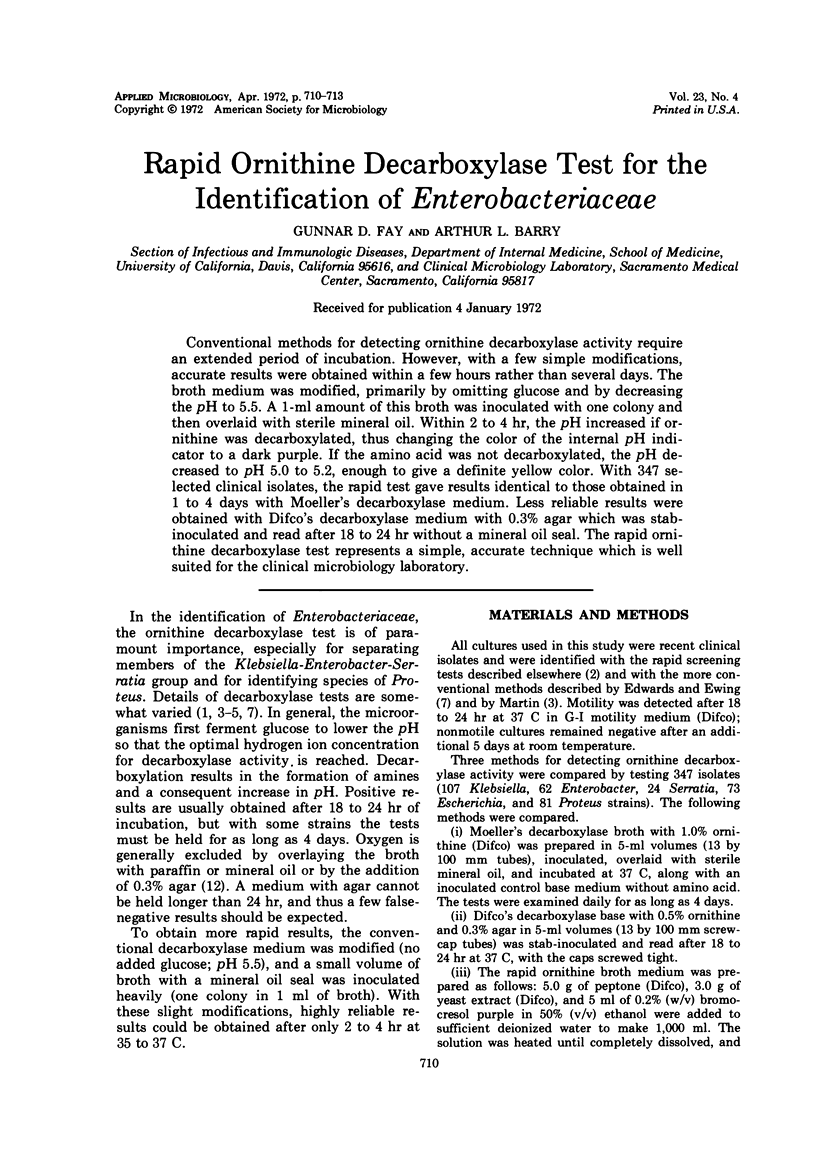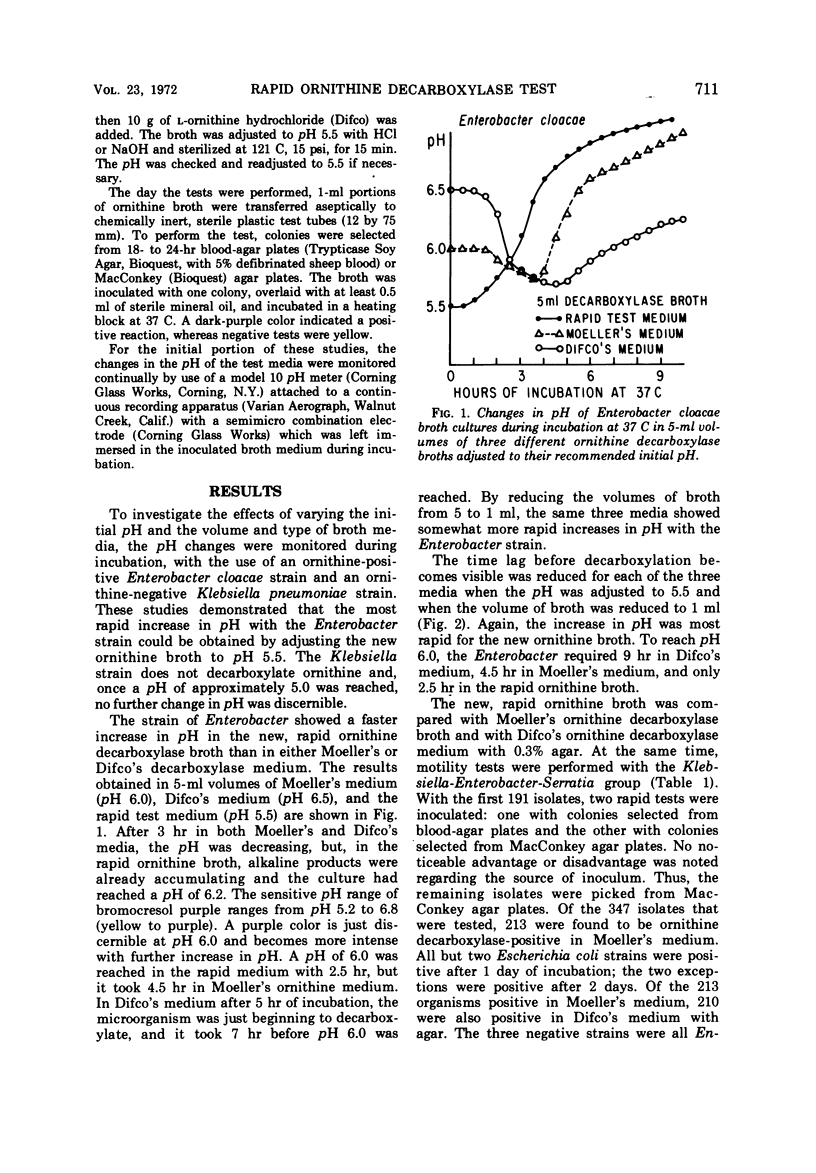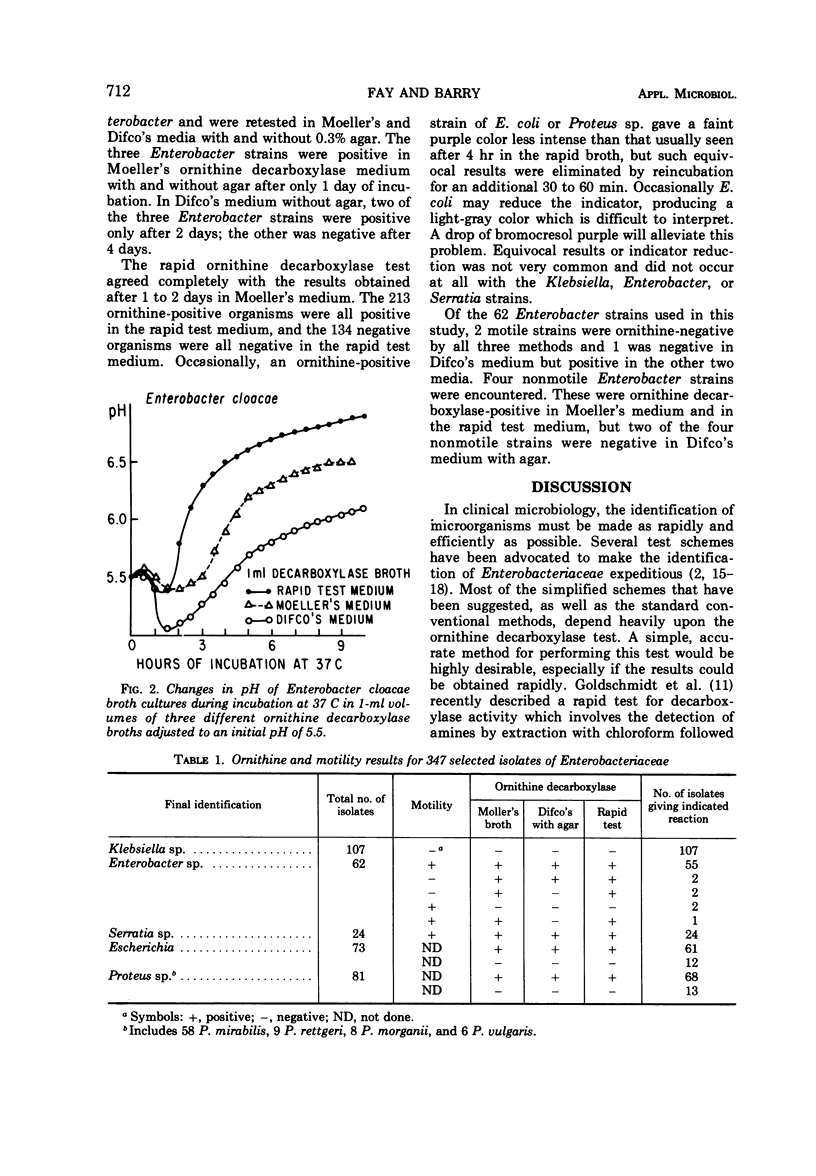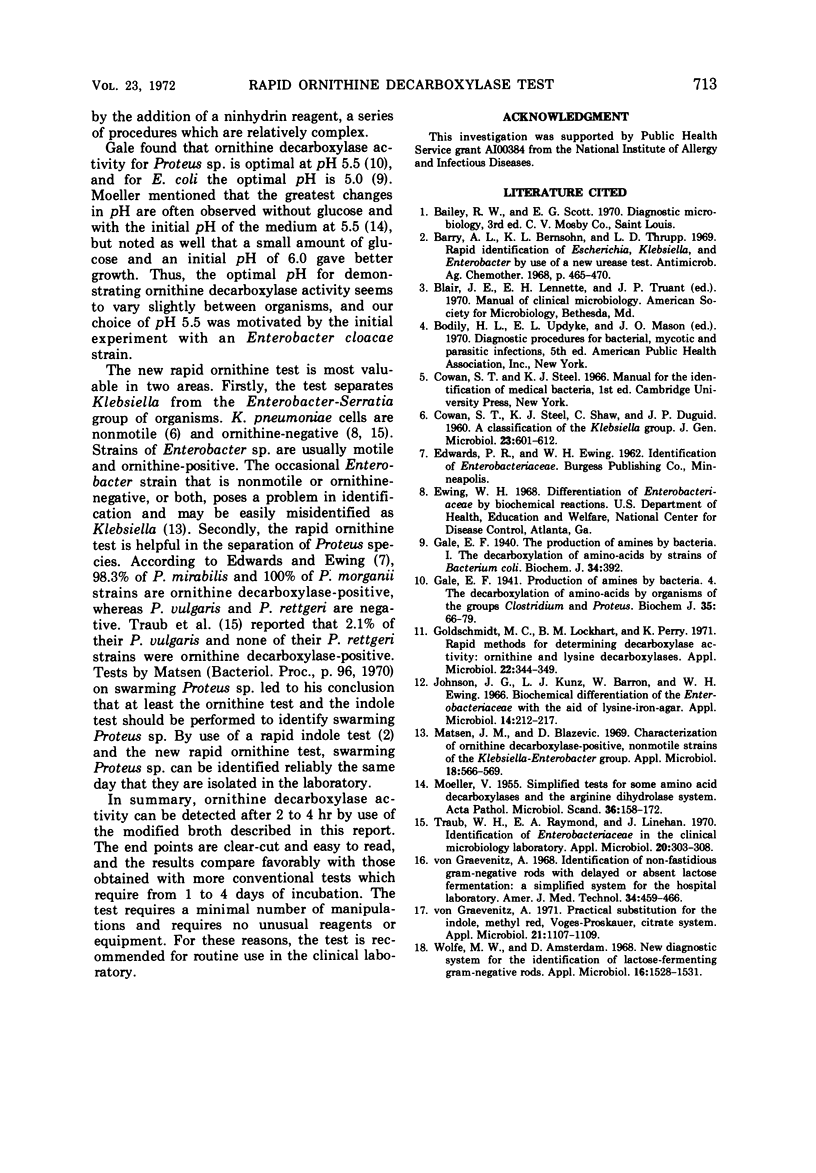Abstract
Conventional methods for detecting ornithine decarboxylase activity require an extended period of incubation. However, with a few simple modifications, accurate results were obtained within a few hours rather than several days. The broth medium was modified, primarily by omitting glucose and by decreasing the pH to 5.5. A 1-ml amount of this broth was inoculated with one colony and then overlaid with sterile mineral oil. Within 2 to 4 hr, the pH increased if ornithine was decarboxylated, thus changing the color of the internal pH indicator to a dark purple. If the amino acid was not decarboxylated, the pH decreased to pH 5.0 to 5.2, enough to give a definite yellow color. With 347 selected clinical isolates, the rapid test gave results identical to those obtained in 1 to 4 days with Moeller's decarboxylase medium. Less reliable results were obtained with Difco's decarboxylase medium with 0.3% agar which was stabinoculated and read after 18 to 24 hr without a mineral oil seal. The rapid ornithine decarboxylase test represents a simple, accurate technique which is well suited for the clinical microbiology laboratory.
Full text
PDF



Selected References
These references are in PubMed. This may not be the complete list of references from this article.
- Barry A. L., Bernhn K. L., Thrupp L. D. Rapid identification of Escherichia, Klebsiella, and Enterobacter by use of a new urease test. Antimicrob Agents Chemother (Bethesda) 1968;8:465–470. [PubMed] [Google Scholar]
- COWAN S. T., STEEL K. J., SHAW C., DUGUID J. P. A classification of the Klebsiella group. J Gen Microbiol. 1960 Dec;23:601–612. doi: 10.1099/00221287-23-3-601. [DOI] [PubMed] [Google Scholar]
- Gale E. F. Production of amines by bacteria: The decarboxylation of amino-acids by organisms of the groups Clostridium and Proteus With an addendum by G. L. Brown, F. C. MacIntosh and P. Bruce White. Biochem J. 1941 Jan;35(1-2):66–80. doi: 10.1042/bj0350066. [DOI] [PMC free article] [PubMed] [Google Scholar]
- Gale E. F. The production of amines by bacteria: The decarboxylation of amino-acids by strains of Bacterium coli. Biochem J. 1940 Mar;34(3):392–413. doi: 10.1042/bj0340392. [DOI] [PMC free article] [PubMed] [Google Scholar]
- Goldschmidt M. C., Lockhart B. M., Perry K. Rapid methods for determining decarboxylase activity: ornithine and lysine decarboxylases. Appl Microbiol. 1971 Sep;22(3):344–349. doi: 10.1128/am.22.3.344-349.1971. [DOI] [PMC free article] [PubMed] [Google Scholar]
- Johnson J. G., Kunz L. J., Barron W., Ewing W. H. Biochemical differentiation of the Enterobacteriaceae with the aid of lysine-iron-agar. Appl Microbiol. 1966 Mar;14(2):212–217. doi: 10.1128/am.14.2.212-217.1966. [DOI] [PMC free article] [PubMed] [Google Scholar]
- Matsen J. M., Blazevic D. J. Characterization of ornithine decarboxylase-positive, nonmotile strains of the Klebsiella-Enterobacter group. Appl Microbiol. 1969 Oct;18(4):566–569. doi: 10.1128/am.18.4.566-569.1969. [DOI] [PMC free article] [PubMed] [Google Scholar]
- MØLLER V. Simplified tests for some amino acid decarboxylases and for the arginine dihydrolase system. Acta Pathol Microbiol Scand. 1955;36(2):158–172. doi: 10.1111/j.1699-0463.1955.tb04583.x. [DOI] [PubMed] [Google Scholar]
- Traub W. H., Raymond E. A., Linehan J. Identification of Enterobacteriaceae in the clinical microbiology laboratory. Appl Microbiol. 1970 Sep;20(3):303–308. doi: 10.1128/am.20.3.303-308.1970. [DOI] [PMC free article] [PubMed] [Google Scholar]
- Von Graevenitz A. Identification of non-fastidious gram-negative rods with delayed or absent lactose fermentation: a simplified system for the hospital laboratory. Am J Med Technol. 1968 Aug;34(8):459–466. [PubMed] [Google Scholar]
- Wolfe M. W., Amsterdam D. New diagnostic system for the identification of lactose-fermenting gram-negative rods. Appl Microbiol. 1968 Oct;16(10):1528–1531. doi: 10.1128/am.16.10.1528-1531.1968. [DOI] [PMC free article] [PubMed] [Google Scholar]
- von Graevenitz A. Practical substitution for the indol, methyl red, Voges-Proskauer, citrate system. Appl Microbiol. 1971 Jun;21(6):1107–1109. doi: 10.1128/am.21.6.1107-1109.1971. [DOI] [PMC free article] [PubMed] [Google Scholar]


